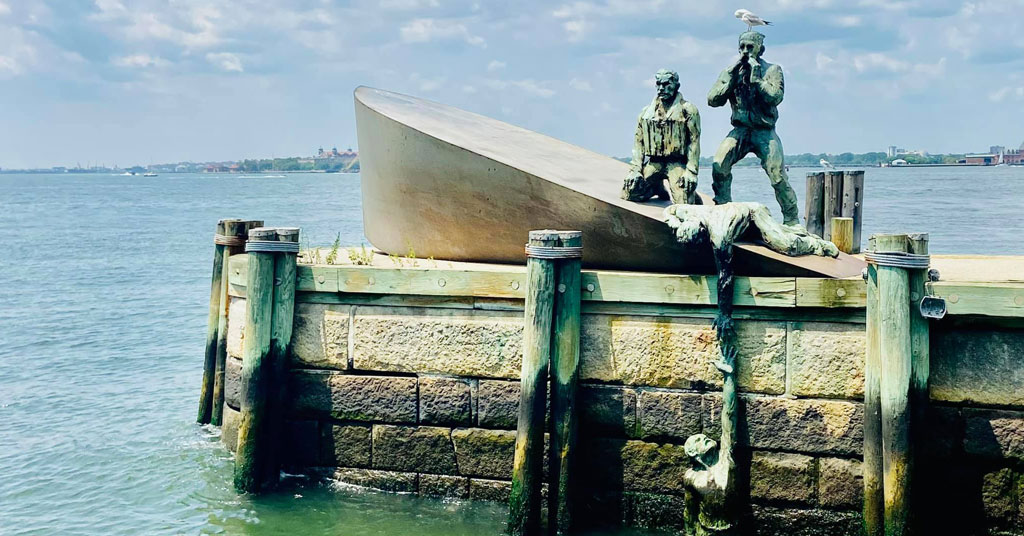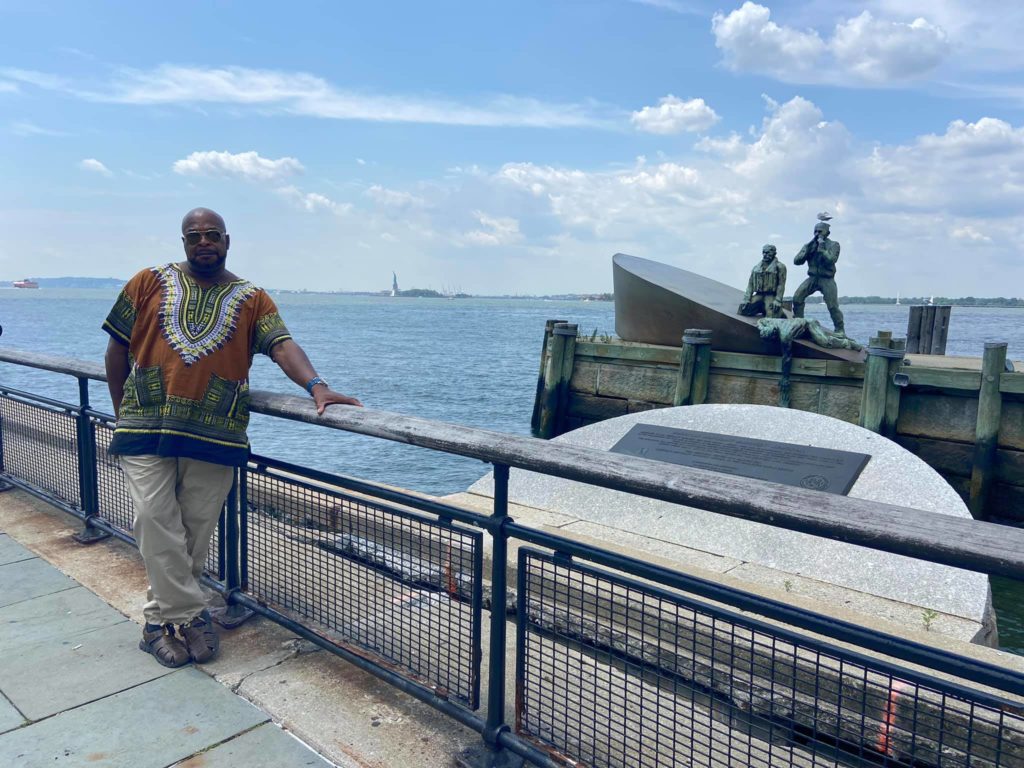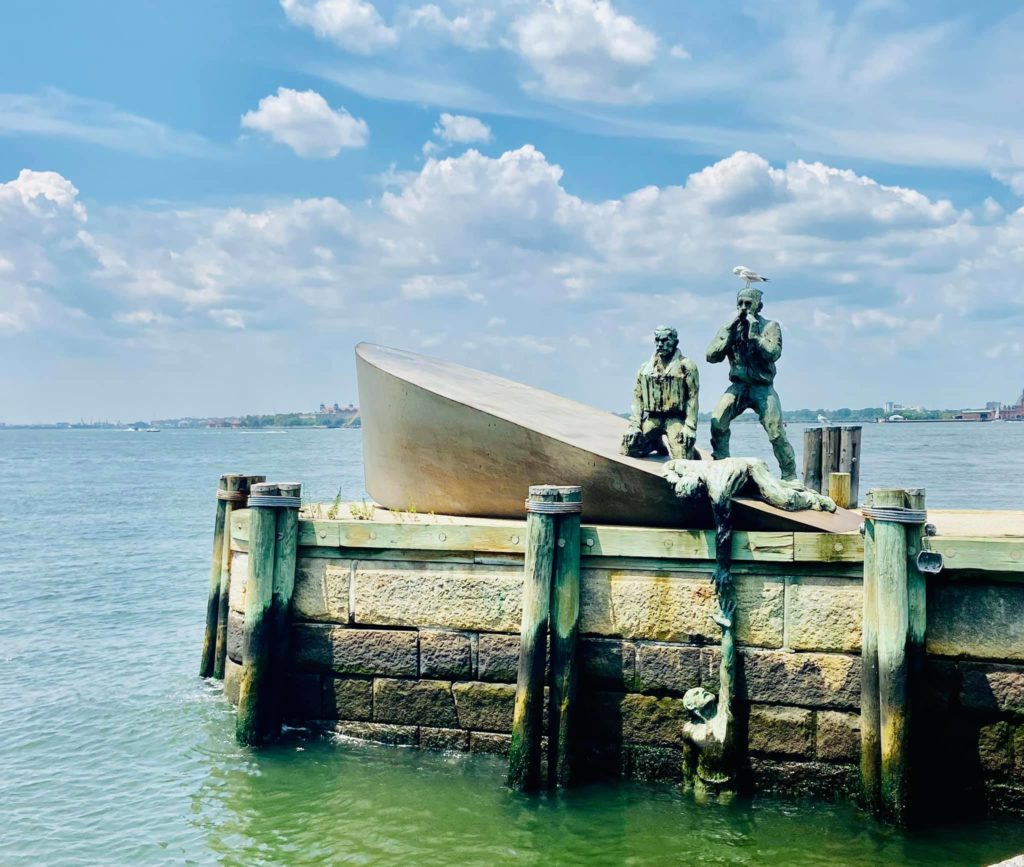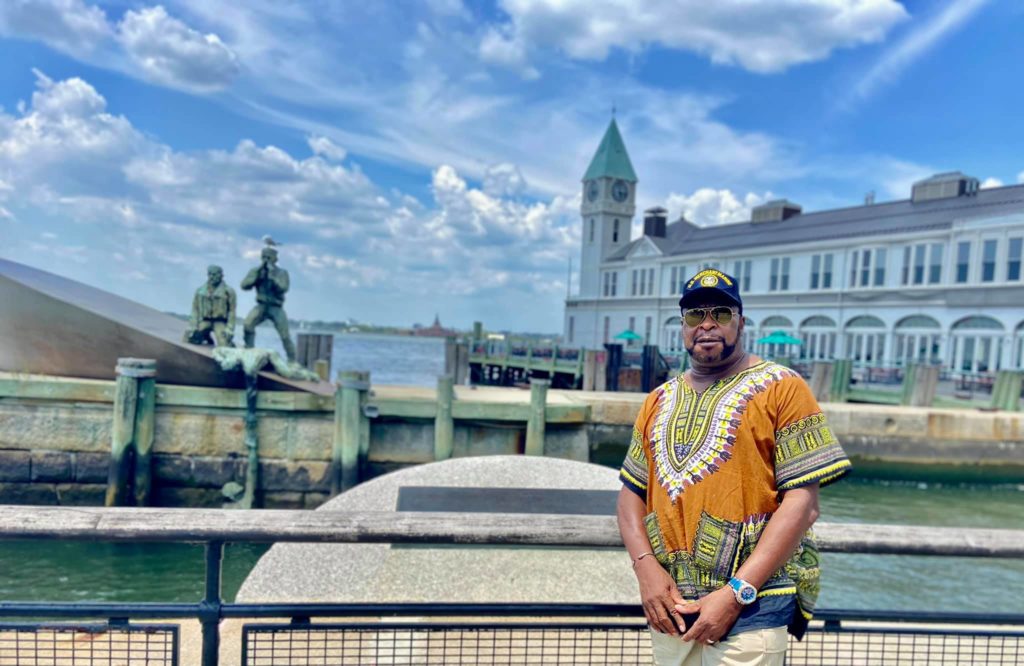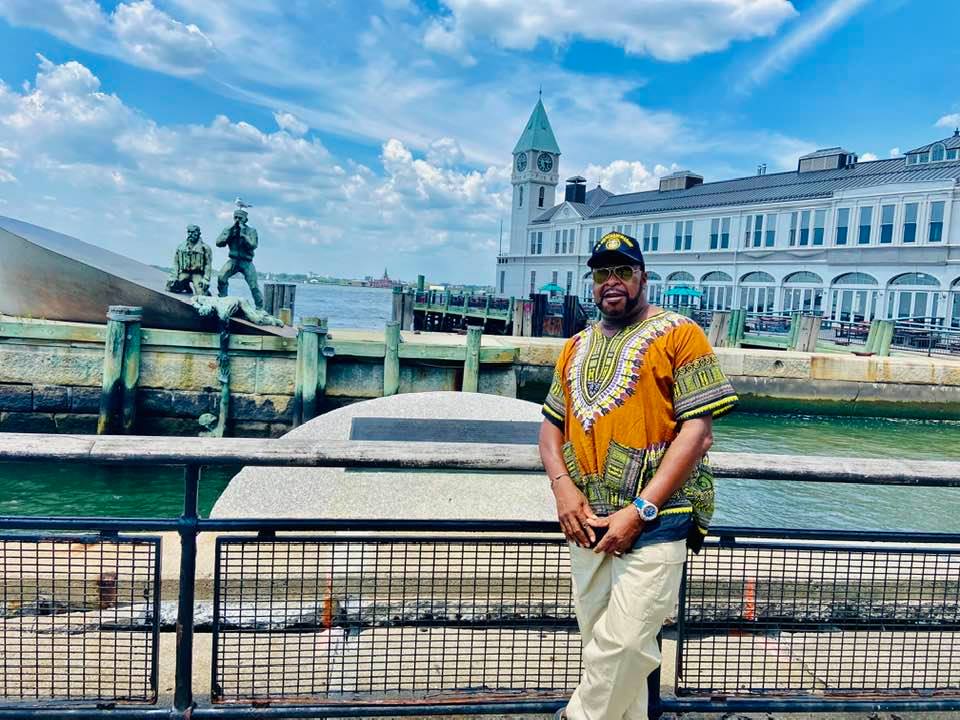After four years residing in New York City and promising myself, I finally made it down here to Battery Park to the American Merchant Marine Memorial. Thought that sharing a small part of my birthday weekend at this hallowed site would be the appropriate time. As it would help me to reflect upon the ugliness of hatred, racism, bigotry, and anger while I pay my respects as a homage to all my fellow mariners lost at sea during peace and wartime.
Particularly those who served and paid the ultimate sacrifice… had it not been because of their sacrifice paid in torturous pain and in the blood of the merchant marines, there would have been no landing, no armament, nor troops to land on the beaches of the European theater, thus change the course of history, therefore, else today the world would perhaps look and sounded much, much different.
The visit was very moving. Particularly since I sailed with many children, grandchildren, and other relatives of some of these men, who died at sea during such times.
Although my grandfather, Clifton McKinsey, sailed and fought on board the ships during WW2, but returned home to live a happy and wholesome life in Mobile, Alabama; following his retirement… we, our family members, personally had no casualties. Except, that young Wilson Francisco (RIP) from Roatan, Honduras, who all believed to have been mother’s first crush, was among the 8000 plus who went down with their ship. When asked about him, mom, face immediately grew saddened, as she’d barely uttered. “His ship was torpedoed. He died, his ship became his watery grave.”
At the American Merchant Mariner’s Memorial in Manhattan, New York, Twice a day, tragically one of these bronze mariners goes under, appearing to drown with the tide in remembrance of all those the sea has taken.
The life-size sculpture to the memorial that’s in the water off Battery Park is one of the most moving memorials you are ever likely to see. The American Merchant Mariner’s Memorial was sculpted by Marisol Escobar in 1991. It takes the life-size form of three merchant seamen, stranded on a sinking ship, who are terrified, desperately calling for help and trying to reach the desperate hand of one of their shipmates floundering in the water below.
The fact is that United States Merchant Mariner, and all who served onboard US ships, suffered more casualties than any other American service during World War II. 2 of every 26 mariners would not return home. They faced submarines, mines, armed raiders, destroyers, aircraft, “kamikaze,” and disastrous, natural elements at sea.
About 8,500 mariners were killed at sea, over 12,000 wounded, of whom at least 1,300 died from their wounds, and 670 men and women were taken prisoner. Some were blown to death, some incinerated, some drowned, some froze, and some starved. More than 70 died in prison camps or aboard Japanese ships while being transported to other camps. Thirty-one American merchant ships vanished without a trace to a watery grave. Among them, many Honduran, West Indian, and Garinagu sailors whose families remain uncompensated yet still unrecognized by the United States and other European governments. The sad part about most of this was that they didn’t sign up for war but simply worked onboard their ships to help feed their families. Many of them perhaps even being conscientious objectors on board ships in the middle of the war, with no other choice.
The sculpture bears the following inscription: “This memorial serves as a marker for America’s merchant mariners resting in the unmarked ocean depths.”
The monument is based on a true event, the sinking of SS Muskogee by German U-boat 123 on March 22nd, 1942. The Muskogee was sailing from Venezuela to Halifax carrying a cargo of petroleum. Without an escort and unarmed, the Muskogee was hit by a torpedo in her engine room and began to sink within a quarter of an hour, 335 miles north-northeast. Ten survivors clung to life rafts in the burning sea as the U-boat surfaced. The submarine captain Reinhard Hardegen took their photograph, and it’s from this that Escobar based her sculpture.
What makes the memorial, so moving is that the helpless sailor in the water is covered by the Upper New York Bay with each high tide. His fingertips permanently out of reach to his companions, he drowns twice a day. The plaque next to the memorial makes the striking statue all the more poignant, where we learn that for the crew of the SS Muskogee, “left to the perils of the sea, the survivors later perished.”
Please note carefully the seagull that landed atop one of the rescuing sailors aboard the sinking ship sculpture, and did not leave, regardless of how many pictures we took. All of them have a seagull.
Footnote: back in 1982 – 83, as my ship, the HMS Cunard Princess and Countess, were called in by the British government to serve in the Falkland’s war as a troop transport. The rumor came around that we might be asked; Captain then began inquiring about those of West Indian \ British background. ‘Twas then I thought to myself, the weather and beaches were quite nicer in beautiful Puerto Rico. I disembarked off the Princess two days before she headed out to South Hampton, England, to be retrofitted as a troop transport ship. I embark upon her return
No casualties suffered, thank God.
